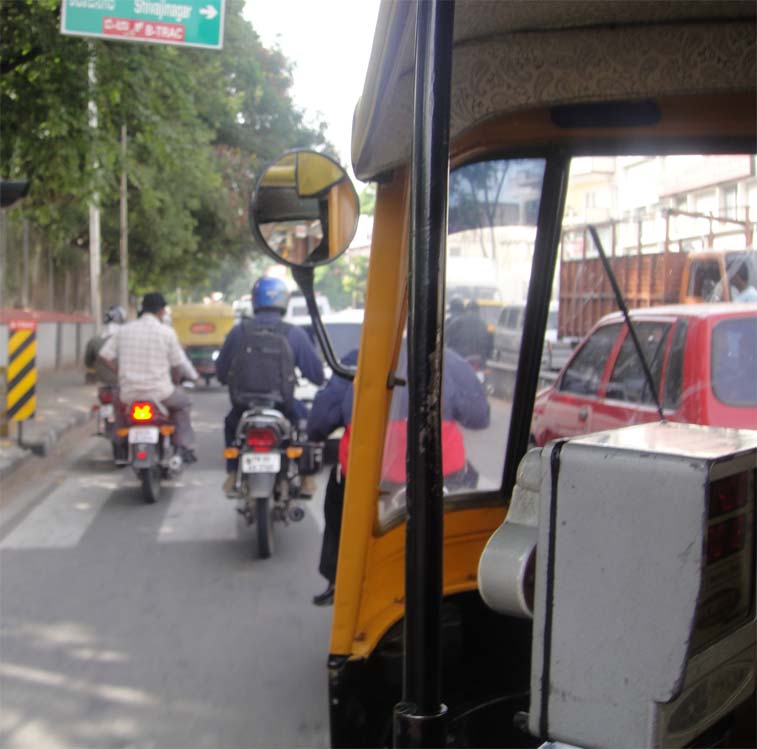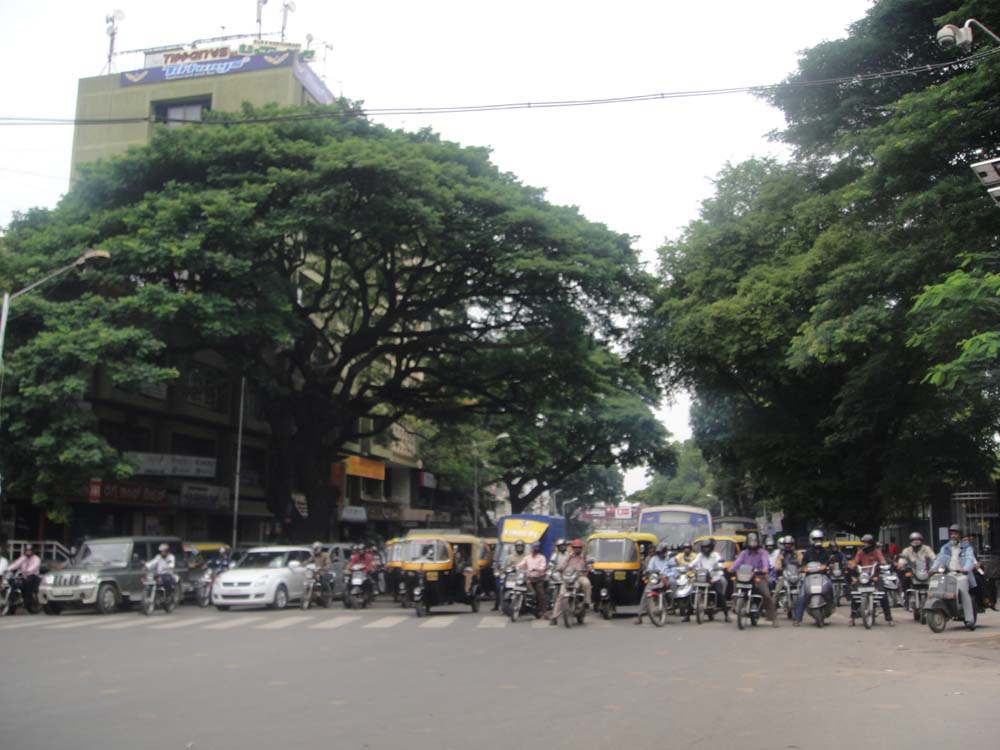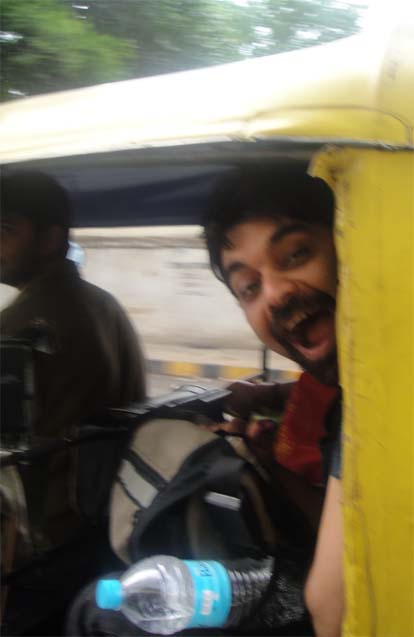We begin our second week. The students are working 8 hours days braving the pre-monsoon heat and occasional power outages. We are getting used to the lack of air-conditioning!
It is a long commute. The organizations are not far, but the traffic slows things down considerably. The traffic is a perfect allegory of innovation. Everyone is moving fast trying to get ahead, filling up the spaces left by others or forging forward into new territory followed by legions of copy-cats. Because many people are moving in the same direction, and each person does not have the bandwidth to handle it all, we have bottlenecks, path dependence, but also huge gains. Network externalities can be both good and bad. This is the reality of working in urban India. This is the nature of innovation in India.
Both Dream a Dream and Enable India have been generous and gracious hosts. All staff including the busy executives take considerable time out of their day to meet with students, brainstorm, work together and orient the students to the problems the students have to solve. We have been invited to staff parties in the evening, into homes, as well as catered lunches around the staff table. I am surprised at how engaged Dream a Dream and Enable India are with their volunteers and interns. Some US organizations lack this kind of commitment to the new generation and do not know how to leverage young human capital. It seems like every organization or person we meet in Bangalore is really committed to youth in ways that are very different than the large entrepreneurial organizations in the US. This personal touch and engagement especially in these formative years is sometime more powerful than larger more traditional internship programs. We feel very lucky to have met such capable and committed people.
This Saturday CSIM organized our second orientation day at the SIET Institute of Management near the famous Bull Temple (see Multimedia for new pictures). I call these sessions “Understanding the context”. Students participated in three sessions to give them a better background of the local social entrepreneurship. The agenda is below.
Topic Faculty
NGO management systems in India Dr. Mohan Raj, Carbon 22 Management Consulting
Governance of NGOs in India Varsha Avadhany, CSIM Instructor and Fidelity International
Social Entrepreneurship in India Lily Paul, Ashoka Foundation external relations and CSIM Instructor.
We were treated a delicious home-cooked meal for lunch, lots of sweet coffee and a final session where we met CSIM graduates who talked about their nascent entrepreneurial initiatives. CSIM is another capable organization committed to youth and entrepreneurship and it shows when we met their alums. Again the patience that the CSIM speakers showed with student questions illustrates this ability and commitment. It was good to get academic for a bit. Now back to work.

































